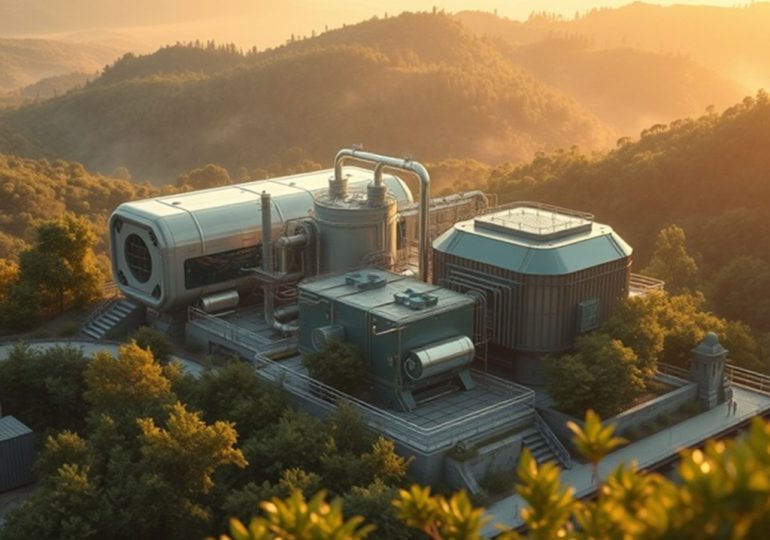One of the differentiating features of the Shell scenarios work is the timeline through to 2100 that is offered. Many other energy scenarios more typically model through to 2050, such as in the World Energy Outlook from the IEA. But for a thorough analysis of the long term emissions of CO2 and temperature, a view to 2050 isn’t sufficient.
The Shell scenarios have always recognised that while fossil fuels lose market share and eventually make their way out of the energy system, in the medium term there will continue to be abundant use. This is the result of a world that still depends on fossil fuels for nearly 80% of global energy needs and for many other uses too. Even in the long term, under the most rapid transition pathway we could devise, a modest tail of fossil fuel use extends into the 22nd century before finally declining to almost zero use. Without managing carbon emissions, the CO2 from this tail will add up, which in turn would drive up temperature until fossil fuel use stops, given increases in temperature come from the accumulation of CO2 in the atmosphere over time, not the level of CO2 emissions in any given year.
The 2025 Energy Security Scenarios extend through to 2100 and therefore offer insight into this long tail of fossil fuel use and how the associated CO2 emissions might be managed. The scenarios comprise three storylines; two exploratory scenarios called Surge and Archipelagos, and Horizon, our third scenario, normative and illustrative of a rapid acceleration of the energy transition. In Surge, an era of robust economic growth is ushered in by artificial intelligence technologies, with the transition accelerating as a result, whereas the Archipelagos scenario sees a world where trade friction and geopolitics impinge on the speed of the transition.
In Horizon, the CO2 still to come, assuming no management of CO2, amounts to 1 trillion tonnes, enough to take the world to almost 2°C from where we are today. In Surge and Archipelagos the numbers are 1.7 trillion tonnes and over 2 trillion tonnes respectively, which implies temperatures well over 2°C. The long tail is important because climate action to date has largely assumed that fossil fuels could be quickly phased out by a rapid transition. Rather, a dual focus is required, comprised of building a new energy system but also recognising the need to mange the CO2 from the legacy system as well.
While the Horizon scenario serves as a useful reference for the pathway to net-zero emissions in 2050, Surge and Archipelagos offer a flavour of the world that we are actually dealing with. Surge embodies a rapid transition, with technologies like solar PV and grid batteries scaling at rates considerably faster than now. But it is also a world of higher economic growth, which brings with it more demand for goods and services (which includes those solar PV panels) and therefore more energy demand. In the short term that means even more fossil fuel use. But by the end of the century fossil fuels have shifted from the current level of 78% of the energy system to just under 10% – a startling transition in 75 years. With a focus on carbon management, net-zero emissions comes earlier, in 2080, too late for limiting warming to 1.5°C, but sufficient for 2°C in 2100 after a short period of overshoot of 2°C.
Nevertheless, Surge still requires a commercial breakthrough for the deployment of carbon capture and storage (CCS) technology. In the scenario this happens via direct air capture (DAC) with geological storage (DACCS), which is deployed at very large scale after 2040. The big technology companies, seeking ways to manage their growing indirect carbon footprints, step in and invest. DAC also lends itself to modular assembly line production, which is how the technology scales rapidly. The scenario recognises that a complete end to fossil fuel use is a 100-year journey, during which time carbon management must play an increasing role.
The three scenarios don’t just focus on technology to capture carbon but also highlight the importance of land carbon management. This includes ending deforestation, encouraging the agriculture sector to engage in carbon farming (soil carbon management), embarking on large scale reforestation and protecting critical ecosystems with high carbon stocks, such as mangroves, wetlands, and grasslands. The size of the land management prize, as demonstrated in the Horizon scenario, is 600 billion tonnes of CO2 over the course of the century, or 15 years of current CO2 emissions.
The current global CO2 story can be illustrated as shown below, with most CO2 emissions coming from fossil fuel use, but there are contributions from current land use activities and industries such as cement manufacture. The bioenergy industry is shown as carbon neutral, as the CO2 that is emitted when the fuel is used is reabsorbed when the originating biomass grows.
By 2060 in the Surge scenario, the global CO2 story has changed considerably. Fossil fuel use has dropped by about half but remains a big part of the energy system. However, emissions are down by nearly 75% due to extensive carbon management activities. By 2080, when Surge reaches net-zero emissions, fossil fuel use has fallen by two-thirds, but is still important in industry and aviation.
The importance of carbon management throughout this century cannot be understated, and this was the message from a recent Tony Blair Institute report as well. Their report states (amongst other key points);
Prioritise global investment in carbon capture –
investing in solutions that capture emissions at source before they reach the atmosphere, together with breakthrough technologies like direct air capture that permanently remove carbon. Both are technologically feasible but need policy and capital to scale.
Scale up nature-based solutions
from planting forests to developing carbon-smart crops, we must harness the power of nature and science together. Nature is one of our best allies in this fight, and we need to back it with smart science and innovation.
Coming back to the evidence from the scenario stories, managing carbon in this century means the difference between limiting warming to a level society can adapt to or allowing the surface temperature rise to exceed 2°C, and possibly by several tenths of a degree.
Note: Shell Scenarios are not predictions or expectations of what will happen, or what will probably happen. They are not expressions of Shell’s strategy, and they are not Shell’s business plan; they are one of the many inputs used by Shell to stretch thinking whilst making decisions. Read more in the Definitions and Cautionary note. Scenarios are informed by data, constructed using models and contain insights from leading experts in the relevant fields. Ultimately, for all readers, scenarios are intended as an aid to making better decisions. They stretch minds, broaden horizons and explore assumptions.
Leave a comment





